The development of the Albert Schweitzer House in Gunsbach since its construction
DURING ALBERT SCHWEITZER’S LIFETIME (1928-1965)
Louis Schweitzer, Albert’s father and Gunsbach’s pastor for 50 years, died in 1925. The presbytery was no longer the home of the Schweitzer family. Albert had been back in Lambaréné for almost a year, where he began work on his third hospital. He returned to Europe in 1927 for a major concert tour, and in 1928 received the Goethe Prize from the city of Frankfurt, which enabled him to finance his house in Gunsbach, which was inaugurated on 5 April 1929.
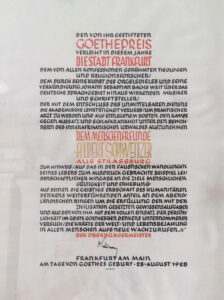
From the outset, the plans envisaged that the house would not simply be a pied-à-terre for people returning from their travels, but a European ‘headquarters’ for Albert Schweitzer’s work. The three levels of the house were divided as follows: on the ground floor, the flats of the Schweitzer couple; on the first floor, the identical flats of a collaborator; and on the second floor, under the rafters, rooms for visitors.
… a European “headquarters” for the work of Albert Schweitzer.
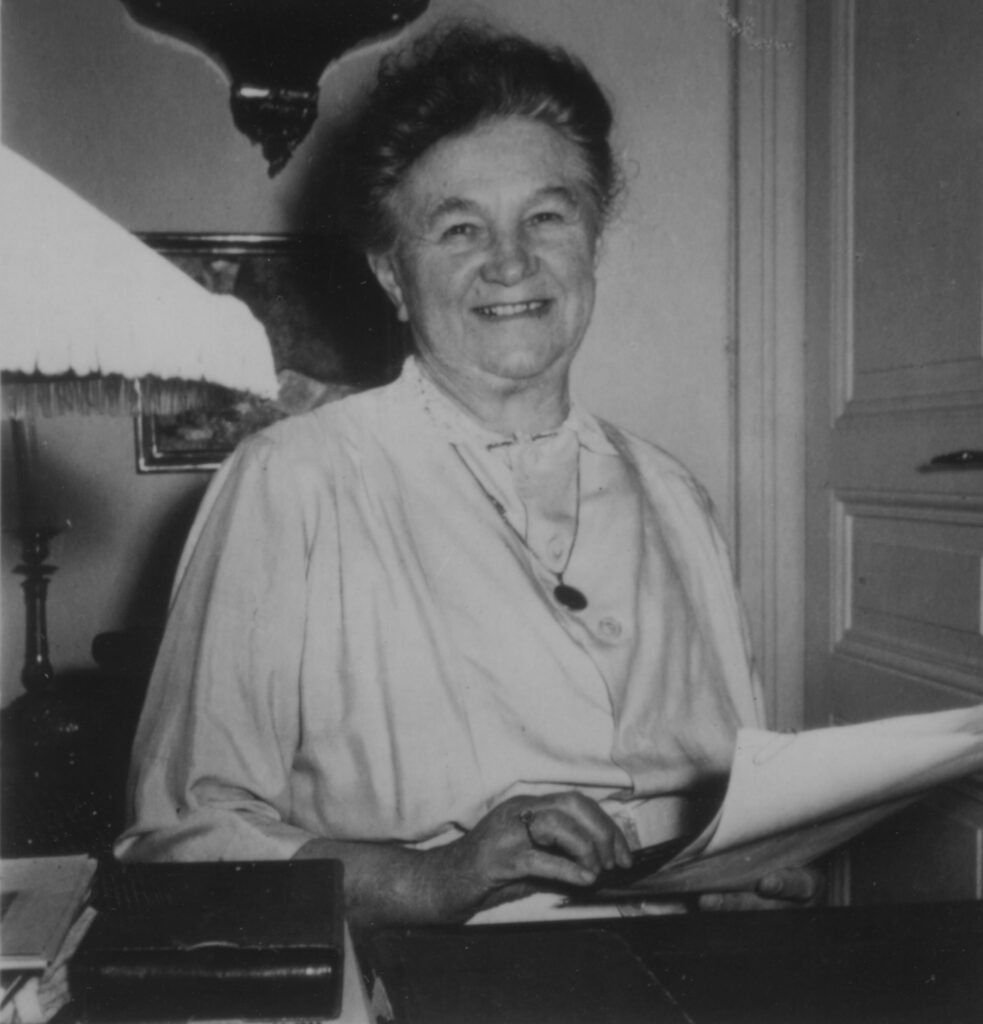
From 1930 to 1971, this local employee was Emmy Martin (1882-1971). At the age of 17, Emmy learned to sing at the Strasbourg Conservatoire and became a brilliant singer. She asked Albert Schweitzer to be her piano teacher. As he did not normally take pupils, he made an exception for her. From 1919 onwards, Emmy Martin became a collaborator in the work and in 1930 moved to the house in Gunsbach, to liaise between Europe and Lambaréné. She prepared Albert Schweitzer’s concerts and accompanied him on his many trips throughout Europe. She helped him with his extensive correspondence, as well as with the selection of candidates for hospital posts.
Finally, as it does today, it welcomes visitors, whether or not they are staying on the second floor. These visitors come in large numbers to the Maison Schweitzer, to find out about the work, even when its illustrious inhabitant is not there. The impressive guest books of the house between 1930 and 1968 bear witness to this: family, friends, numerous doctors, theologians and musicians from all over the world, American professors of surgery, Japanese writers, members of the Indian National Academy of Letters, a Senegalese journalist, Eisenhower’s doctor…
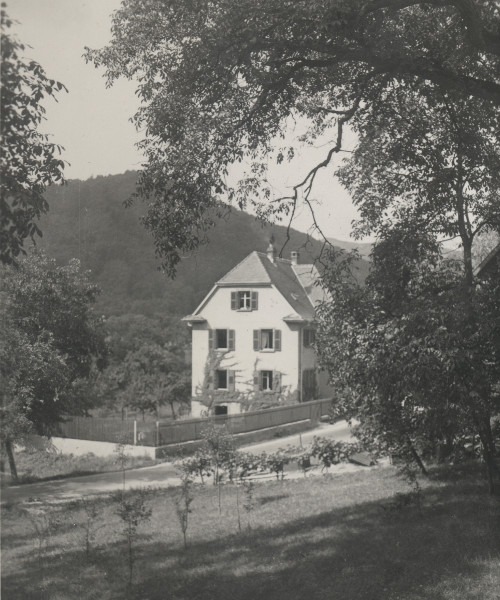
And a number of names have gone down in history: the Nobel Prize-winning physicist Alfred Kastler, the Belgian Nobel Peace Prize winner Dominique Pire, the Cretan writer Nikos Kazantzakis, Stefan Zweig, Antonia Brico, the first internationally acclaimed female conductor, and a certain “Elisabeth”, who came to Gunsbach several times but never mentioned in the guest book that she was the Queen of Belgium…
After Schweitzer’s death, Emmy Martin trained her successor at Gunsbach, Alida Silver, until then a nurse at Lambaréné, until her own death.
THE OPENING OF THE MUSEUM AND THE CREATION OF THE CENTRAL ARCHIVES FROM 1967 ONWARDS
Alida, or Ali Silver (1914-1987), was a Dutch nurse trained in paediatrics and psychiatry. She was very socially committed, particularly to children and the war-wounded, long before arriving in Lambaréné in October 1947. She devoted 20 years to the Albert Schweitzer hospital, then 20 years to the Maison Schweitzer in Gunsbach, after opening the museum and the international central archives in 1967.
She and her colleague Tony van Leer, who was also a nurse at Lambaréné, welcomed thousands of visitors every year and continued to collect archives and collections until 1987. Then it was the turn of Sonja Muller-Poteau (1929-), a midwife at Lambaréné from 1954 to 1959, and her husband Robert (1925-2020), a mechanical engineer who also worked at the hospital, to take up the torch in Gunsbach on a voluntary basis from 1989 to 2009.
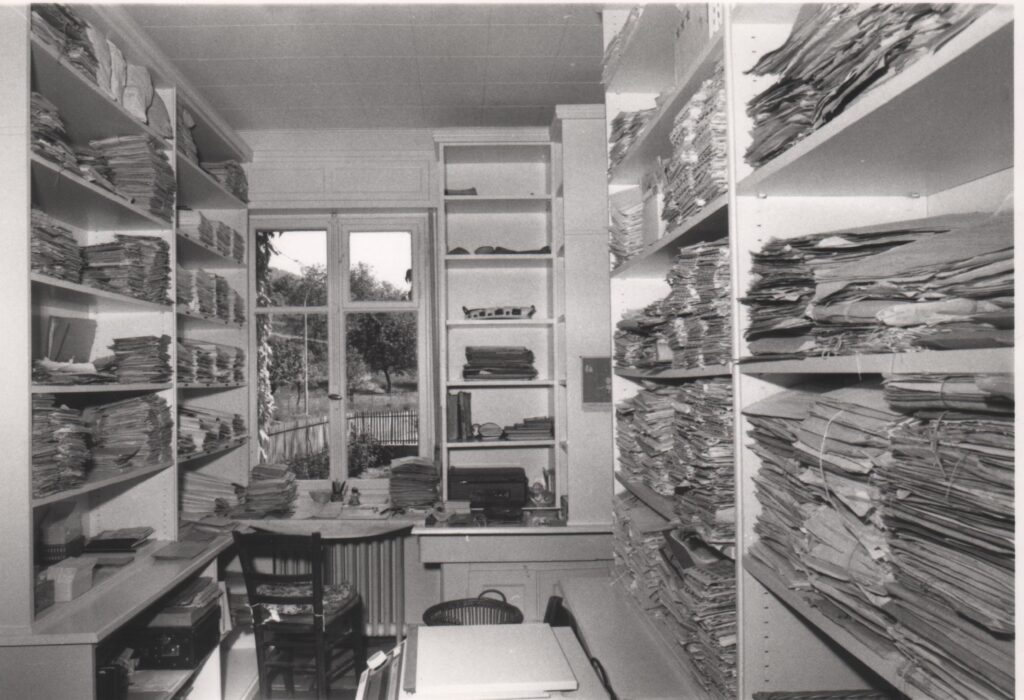
Since 1967, the archives have gradually filled the house: 80,000 letters, 35,000 photos, 20,000 books, 900 scores, 250 medals and awards, 180 videos, 120 vinyl records and several hundred objects of Gabonese art and craftsmanship… The house is physically “overcrowded”, leaving little room for the museum section or associative activities, and requiring modifications to Schweitzer’s flats to create an office, archives, reception area and shop.
But it’s even more emotionally charged, and visitors appreciate being welcomed “as if at home” by these people who were close to the Great Doctor, who are full of anecdotes and knowledge that they pass on with passion intact in their eyes and voices. Visitors can see the collection of Gabonese objects in a room kindly made available by Gunsbach town hall, and the association organises its meetings in the Old Presbytery, transformed into a gîte and table d’hôtes by Robert Poteau. Dozens of researchers, writers and journalists from all over the world are welcomed to the archives every year. In recent years, we have seen a growing interest in Schweitzer’s work, particularly among African, Russian and Chinese researchers.
RESTORATION AND EXTENSION OF THE HOUSE (2014-2020)
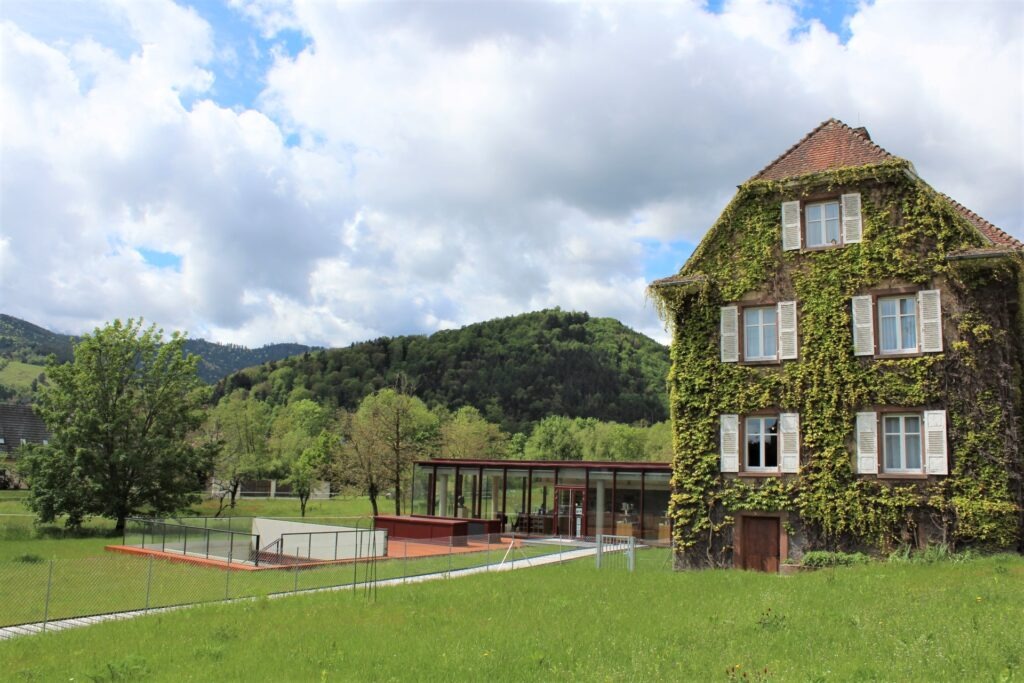
Almost a century after the house was built and fifty years after the museum opened, the association is delighted to be facing new challenges. Of course, there is the need to maintain the building and its contents: the original electrical system has become dangerous for the safety of people and property, and the lack of insulation in the attic, in addition to energy losses, also causes temperatures to fluctuate in the areas where the archives and collections are kept. The growing lack of space is compromising the development of the association’s activities, especially as the other places available to it in Gunsbach are no longer, or less and less, available: the Old Presbytery, which is just as well, is often fully booked due to the increase in the number of tourists. In the medium term, the commune would like to recover the room it provides for the “African Museum”, which enables us to welcome groups and store this collection of over five hundred objects, for which we will also need to find a new space.
Added to this is the obligation imposed by the State to make public places accessible to people with disabilities, which cannot be achieved by a simple access ramp, given the house’s proximity to the road. Without any change to the spaces available for the public, the law prohibits the reception of more than eight people at a time in the house, which makes it impossible to receive groups, coaches or schools. Work is needed.
The first meeting with architect Michel Spitz took place in March 2014. Discussions quickly led to an overall restoration and extension project that would not only meet public reception standards, but also increase the number of activities aimed at spreading “respect for life”, the main mission of the AISL, enshrined in its articles of association by Albert Schweitzer.
Discussions quickly led to an overall restoration and extension project that would not only meet public reception standards, but also increase the number of activities aimed at spreading “reverence for life”, the AISL’s main mission, as enshrined in its articles of association by Albert Schweitzer.
Of course, during these discussions, the delicate issue of preserving a heritage and respecting the site and its environment also arose. Not so much discussions about the merits of the project as such, but rather about the form it was going to take, between legal obligations, the continuity of the association’s activities, in other words the pursuit of its spiritual aims, and the conservation of material assets.
At the end of 2016, the project was designed and planning permission was granted. During this period, the association also began fundraising to enable the work to be carried out. In spring 2017, the AISL General Meeting gave its approval and work began in September 2017.
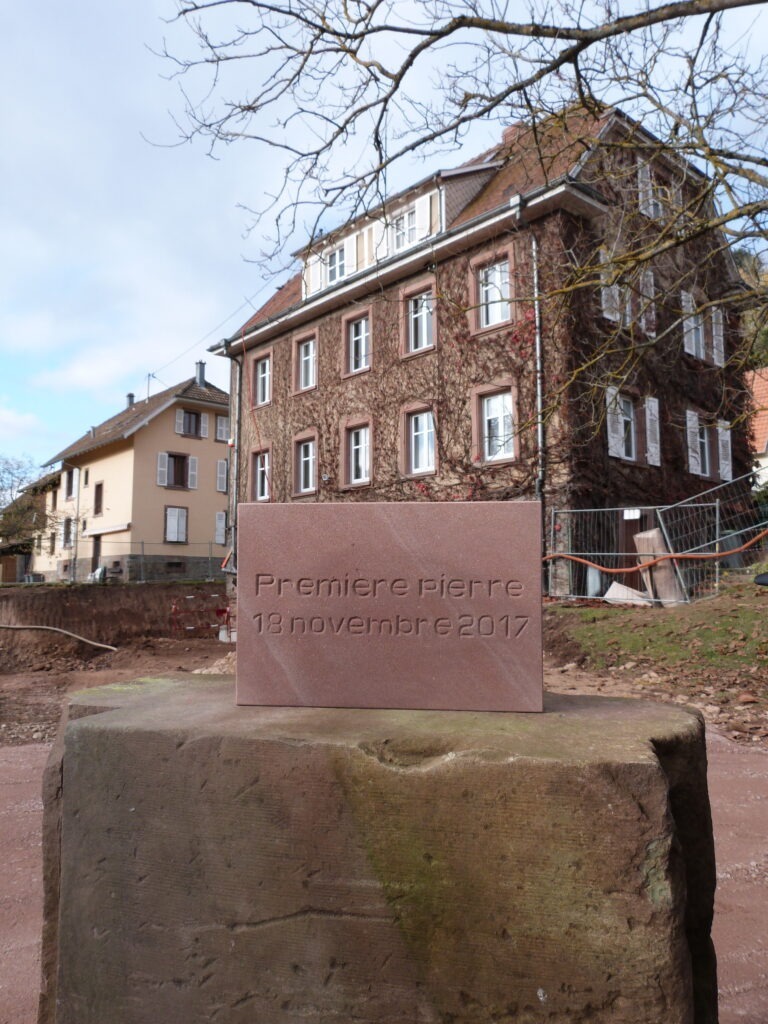
And so, after almost three years’ work, around twenty months’ closure of the museum and a Covid-19 pandemic, visitors can once again push open the door to the home of the Great Doctor.
The ground floor, where the Schweitzer flats are located, has been restored. Restoration, i.e. returning the building to its original state, is the opposite of modernisation. Apart from bringing the building up to standard and a few discreet museographic elements, the rooms where Schweitzer lived have been refurbished as far as possible according to the photos taken when he was alive. The “house” part of the museum now has six rooms that retrace the life of its illustrious inhabitant, from childhood to fame. The cellar of the house has also been transformed into a museum. Here, visitors can discover the African side of Schweitzer’s life: his hospital in Lambaréné, his travels, through the many objects and documents so carefully preserved in the archives since 1967, and which were just waiting to be shown to visitors!
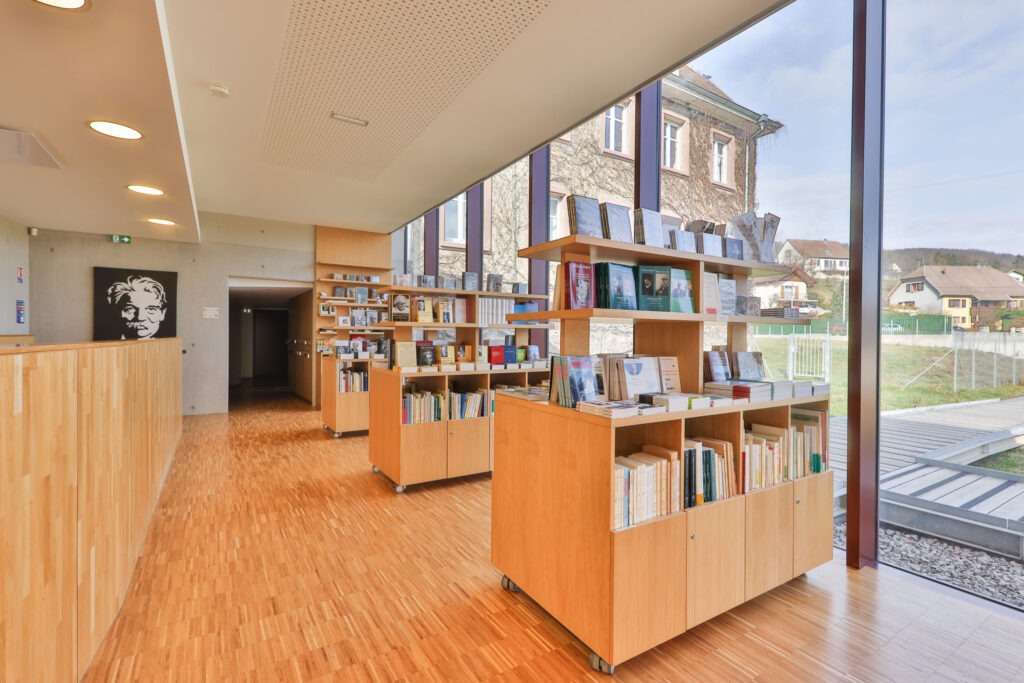
Alongside the house dedicated to the history and many facets of the figure, the new building comprises a garden level section, entirely glazed to be discreet in the landscape from the outside and open to the landscape from the inside. It houses the reception area and the shop, freeing up the historic house for these functions. The majority of the building is underground, making it even more discreet.
It presents the ethic of “Respect for Life”, an ethic that was developed in 1915 but is still staggeringly relevant today. In this part of the museum, visitors are invited to come face-to-face with themselves and experience a moment of introspection, a kind of initiatory journey. A few quotations to read, people to listen to, images to dream about, mysterious objects that speak of a culture so far away and yet so near… From self-respect to respect for all forms of life, the aim is to make visitors feel in just a few moments what Albert Schweitzer called a “progressive widening of the circle of morality”, which was for him the fruit of long philosophical and ethical reflection.
From self-respect to respect for all forms of life, the aim is to convey in a few moments what Albert Schweitzer called a “progressive widening of the circle of morality”, which was the fruit of a long philosophical and ethical reflection.